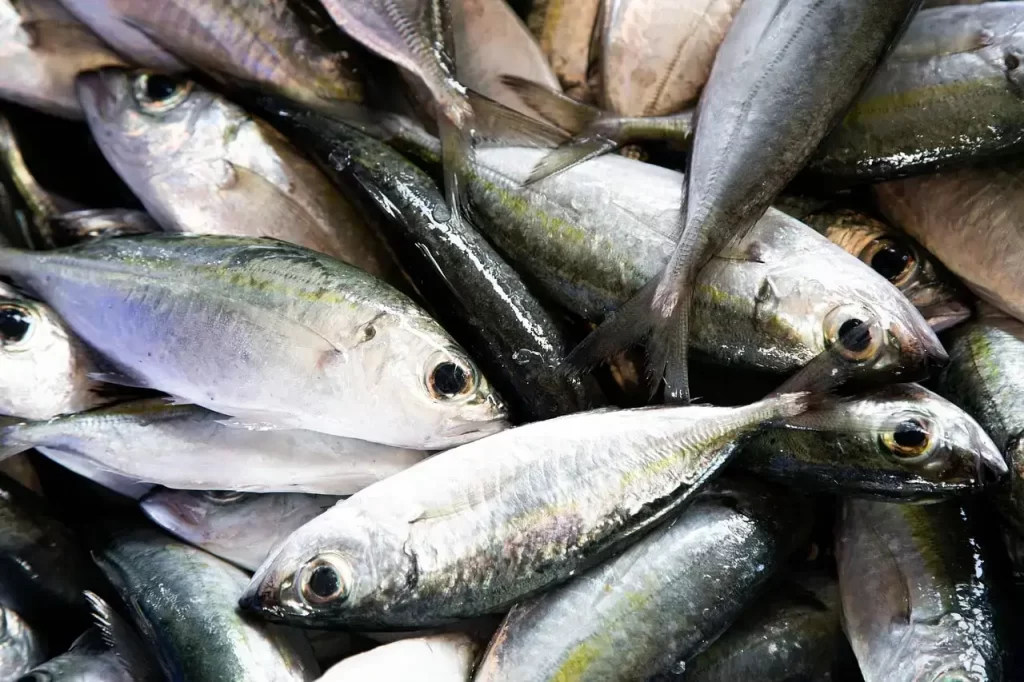Welcome to our comprehensive guide on Tuna! Dive into the depths of this nutritious and versatile fish, tailored specifically for athletes like you. Discover how incorporating Tuna into your diet can elevate your health and enhance your athletic performance.
Unlocking the Power of Tuna: Your Ultimate Guide to Health and Performance
Health Benefits:
- Rich Source of Protein: Tuna is packed with high-quality protein, essential for muscle repair and growth.
- Omega-3 Fatty Acids: Loaded with heart-healthy omega-3s, Tuna supports brain function and reduces inflammation.
- Vitamins and Minerals: Tuna is a natural source of vitamins D and B12, as well as minerals like iron and potassium.
- Low in Calories: For athletes mindful of their calorie intake, Tuna offers a lean protein option without excess calories.
Athletic Performance:
- Muscle Recovery: The protein content in Tuna aids in post-workout muscle recovery, promoting faster healing.
- Sustained Energy: With its balanced macronutrient profile, Tuna provides sustained energy to fuel your workouts.
- Reduced Inflammation: Omega-3 fatty acids in Tuna help combat exercise-induced inflammation, supporting overall performance.
Tuna Compared to Other Fish:
Tuna stands out among other fish for its robust flavor, meaty texture, and nutritional profile. Compared to other fish varieties, Tuna is exceptionally rich in protein and omega-3 fatty acids, making it an ideal choice for athletes seeking optimum nutrition.
Different Types of Tuna:
- Albacore: Known for its mild flavor and firm texture, Albacore Tuna is a favorite for salads and sandwiches.
- Yellowfin: With a slightly stronger flavor, Yellowfin Tuna is versatile and great for grilling or searing.
- Skipjack: Often used in canned Tuna products, Skipjack Tuna has a more pronounced taste and is budget-friendly.
Nutritional Difference Between Canned and Fresh Tuna:
Canned Tuna undergoes processing which may result in some loss of water-soluble vitamins like vitamin C. However, it remains a significant source of protein, omega-3 fatty acids, and essential minerals such as iron and potassium. Some canned Tuna products may include added salt or oils for flavor.
Fresh Tuna, on the other hand, retains more of its natural nutrients as it undergoes minimal processing. However, the nutritional content of fresh Tuna can vary depending on the cooking method used. Grilling or baking fresh Tuna is preferable to frying, as it helps retain more nutrients.
While there may be slight differences in nutritional value between canned and fresh Tuna, both are nutritious options for incorporating into your diet. Consider your preferences, convenience, and dietary needs when making your choice.

Is tuna in water or oil better?
The choice between Tuna packed in water or oil ultimately depends on your dietary preferences and health goals.
Tuna in Water:
- Tuna packed in water tends to be lower in calories and fat compared to Tuna in oil.
- It’s a leaner option for those watching their calorie intake or fat consumption.
- Tuna in water is versatile and can be easily drained before use, making it suitable for salads, sandwiches, and other dishes where you want to control added fats.
Tuna in Oil:
- Tuna packed in oil may have a richer flavor and softer texture compared to Tuna in water.
- The oil used in canned Tuna can vary, with options like olive oil or vegetable oil. Opting for Tuna packed in heart-healthy oils like olive oil can provide additional nutritional benefits.
- While Tuna in oil is higher in calories and fat, it can still be part of a balanced diet when consumed in moderation.
Different Types of Tuna:
- Albacore: Known for its mild flavor and firm texture, Albacore Tuna is a favorite for salads and sandwiches.
- Yellowfin: With a slightly stronger flavor, Yellowfin Tuna is versatile and great for grilling or searing.
- Skipjack: Often used in canned Tuna products, Skipjack Tuna has a more pronounced taste and is budget-friendly.
Ways to Enjoy Tuna:
- Grilled Tuna Steak: Season and grill Tuna steaks for a flavorful main course.
- Tuna Salad: Mix Tuna with Greek yogurt, diced vegetables, and herbs for a refreshing salad.
- Tuna Sushi Rolls: Roll Tuna with rice and nori for a protein-packed sushi delight.
- Tuna Pasta: Incorporate Tuna into pasta dishes with whole wheat noodles and marinara sauce for a satisfying meal.

Nutritional Information (per 100g):
| Nutrient | Amount |
|---|---|
| Protein | 25g |
| Omega-3 Fatty Acids | 1.3g |
| Vitamin D | 10% DV |
| Vitamin B12 | 150% DV |
| Iron | 6% DV |
| Potassium | 300mg |
| Calories | 120 |
FAQs:
Q: Is Tuna safe to eat every day?
A: While Tuna is safe to consume in moderation, it’s advisable not to eat it every day due to potential mercury exposure. Varying your fish consumption helps mitigate this risk.
Q: Can you safely eat tuna every day?
A: Consuming Tuna every day may increase your risk of mercury exposure. It’s recommended to vary your fish intake and consider other protein sources as well.
Q: Is tuna and mayo healthy?
A: Tuna and mayo can be part of a balanced diet when consumed in moderation. However, mayo is typically high in calories and fat. Using it sparingly or opting for healthier alternatives like Greek yogurt can enhance the overall nutritional value of the dish.
Q: What is the best way to store fresh Tuna?
A: Fresh Tuna should be stored in the refrigerator and consumed within 1-2 days. Alternatively, you can freeze Tuna for longer storage.
Q: Can I substitute Tuna for other proteins in my diet?
A: Absolutely! Tuna can be a versatile replacement for other protein sources like chicken or beef in various dishes.
Q: Are there any sustainable options for purchasing Tuna?
A: Look for Tuna products labeled with certifications such as MSC (Marine Stewardship Council) or Dolphin Safe, indicating sustainable fishing practices. Additionally, opting for pole-and-line caught Tuna is environmentally friendly.